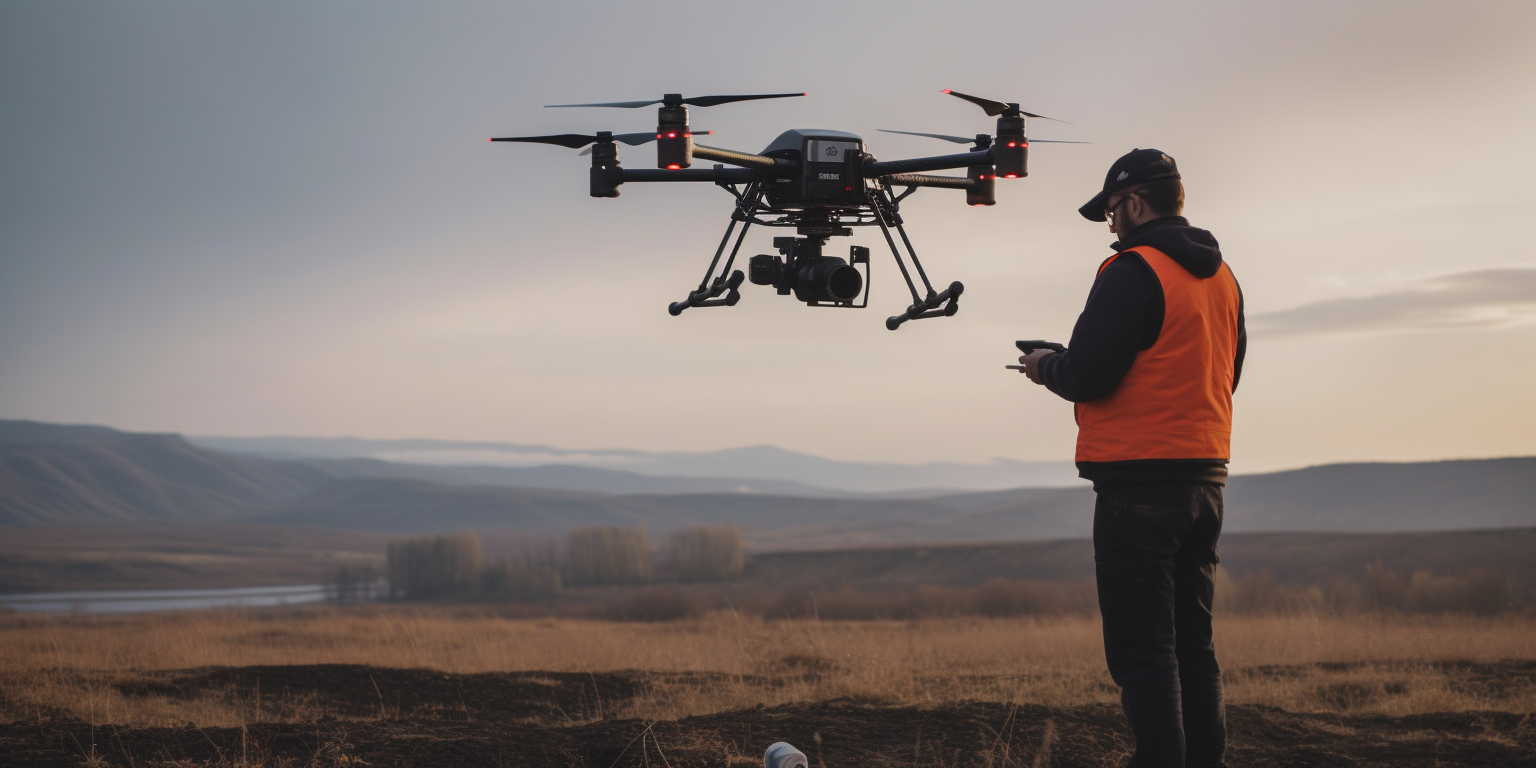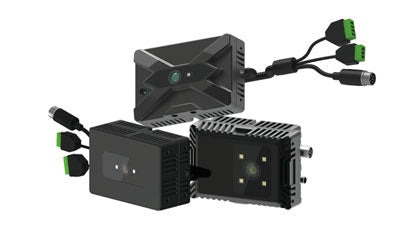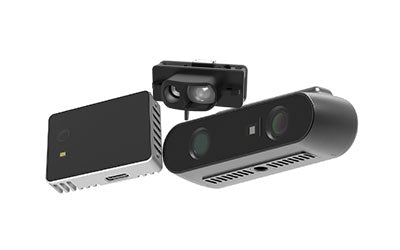Drones and LiDAR: TOF Technology for Enhanced Obstacle Avoidance

With the rapid development of drone technology, more and more industries are adopting drones for aerial monitoring, surveying, logistics, and other tasks. To enhance the intelligence of drones, LiDAR (Light Detection and Ranging) sensors have been widely used in drone systems, especially in drone obstacle avoidance and flight precision. When combined with TOF (Time-of-Flight) technology, LiDAR further enhances a drone's accurate detection and obstacle avoidance capabilities, making drones safer and more reliable in complex environments.
How is LiDAR used in drones?
LiDAR (Light Detection and Ranging) is primarily used in drones to provide high-precision depth information, assisting drones in tasks such as navigation, obstacle avoidance, and environmental scanning. Specifically, LiDAR in drones is used in the following ways:
-
Obstacle Avoidance: LiDAR sensors emit laser pulses and measure the time it takes for the pulses to return, calculating the distance to objects. This allows drones to sense their surroundings in real-time, detect obstacles, and avoid collisions, especially when flying in complex terrains or confined spaces.
-
Terrain Surveying and Mapping: LiDAR technology generates high-precision 3D point cloud maps, which are crucial for tasks like terrain surveying, environmental scanning, and urban modeling. It captures detailed information about the ground, buildings, roads, and other objects, providing precise spatial data.
-
Agricultural Monitoring: In agriculture, LiDAR helps drones monitor crop health, vegetation coverage, and field conditions. Through 3D data, farmers can gain detailed insights into crop growth and optimize farm management.
-
Disaster Assessment and Environmental Monitoring: After natural disasters, LiDAR sensors help drones quickly scan affected areas, providing accurate 3D data to assist rescue personnel in damage assessment and emergency response. LiDAR is also widely used in environmental monitoring, such as forest management and marine exploration.
-
High-Precision Measurements and Modeling: LiDAR sensors assist drones in precise ground measurements, generating detailed Digital Elevation Models (DEM) and Digital Surface Models (DSM), which are used in the modeling and design of buildings, roads, bridges, and other structures.
Through these applications, LiDAR greatly enhances a drone's intelligence, enabling it to perform tasks efficiently and safely in various complex environments.
1. What Is Lidar Sensor?
LiDAR (Light Detection and Ranging) is a technology that calculates the distance between objects and sensors by emitting laser pulses and measuring the time it takes for the pulses to return. This principle enables LiDAR to quickly and accurately gather depth information about the surrounding environment, generating precise 3D point clouds, which are particularly important for drone navigation and obstacle avoidance.
2. LiDAR Applications in Drones
In recent years, an increasing number of drones are equipped with LiDAR sensors. Particularly in complex environments, LiDAR provides drones with real-time distance data, helping them assess the location of surrounding objects and avoid collisions.
2.1 How LiDAR Sensors Work
LiDAR sensors emit laser pulses into the environment and measure the time it takes for the pulses to reflect back. These data are converted into high-precision depth maps, allowing drones to detect obstacles in their flight path and ensure safe flight. The use of TOF technology significantly improves measurement accuracy, especially in complex terrains and irregular object environments.
2.2 Integration of TOF Technology with LiDAR
TOF (Time-of-Flight) technology is one of the core technologies behind LiDAR's precise distance measurement. TOF technology calculates the time difference between sending and receiving a light pulse, providing real-time depth information about the environment. Compared to traditional visual sensors and ultrasonic sensors, TOF technology offers significant advantages in precision and response speed, especially for fast-flying drones, enabling quicker detection of obstacles and ensuring flight safety.
3. Drone Obstacle Avoidance and LiDAR's Advantages
3.1 Accurate Detection and Obstacle Avoidance
Drones equipped with LiDAR sensors can obtain real-time depth data about the surrounding environment during flight, helping to avoid collisions with obstacles. Especially in complex or dynamic environments, LiDAR provides high-precision distance data, enabling drones to detect and avoid obstacles promptly, thus enhancing drone obstacle avoidance capabilities.
3.2 Improved Flight Precision
Real-time depth measurements from LiDAR can significantly enhance the flight precision of drones, especially for tasks such as mapping, environmental scanning, and other complex missions. Combined with TOF technology, LiDAR not only helps drones avoid obstacles but also optimizes flight paths, ensuring safe flight even in irregular terrains.
3.3 Adapting to Complex Environments
LiDAR sensors can work stably under various lighting conditions, and the application of TOF technology makes them even more reliable in changing environments. Whether in bright sunlight or low-light conditions, LiDAR provides accurate measurements, helping drones fly safely in challenging environments.
4. LiDAR and Drone Collision Avoidance
Drone collision avoidance is a critical component of modern drone systems. By combining LiDAR and TOF technology, drones can scan their surroundings in real-time, detect potential obstacles, and adjust flight paths quickly to avoid collisions. This technology is particularly useful for flying in complex environments, such as around buildings, through forests, or for urban air monitoring tasks.
5. Other LiDAR Applications in Drones
Beyond obstacle avoidance, LiDAR has several other applications in drones, including:
-
Environmental Monitoring: LiDAR can capture precise 3D images of environments, widely used in surveying, terrain scanning, and building inspections.
-
Disaster Assessment: After a disaster, LiDAR helps drones scan the affected areas in real-time, providing detailed terrain data and post-disaster assessment reports for rescue teams.
-
Agricultural Monitoring: LiDAR is used for crop health and vegetation monitoring, helping farmers assess the growth of crops and optimize agricultural management.
6. LiDAR and Other Sensors in Drones
In addition to LiDAR, drones can be equipped with various sensors, such as ultrasonic sensors, visual sensors, and infrared sensors. By integrating multiple sensors, drones' obstacle avoidance capabilities and flight stability are significantly enhanced. Combining LiDAR with these sensors allows drones to better adapt to complex flight environments, ensuring both safety and efficiency during flight operations.
7. Conclusion
With the continued development of technology, LiDAR sensors and TOF technology provide strong data support for drones, enabling more precise detection and obstacle avoidance in complex environments. Whether it's drone obstacle avoidance, flight precision improvement, or performing complex tasks, LiDAR technology offers clear advantages. In the future, the combination of LiDAR and TOF technology will further enhance drones' intelligence, bringing more efficient and safer flight solutions to various industries.
Synexens 3D Of RGBD ToF Depth Sensor_CS30
Our professional technical team specializing in 3D camera ranging is ready to assist you at any time. Whether you encounter any issues with your TOF camera after purchase or need clarification on TOF technology, feel free to contact us anytime. We are committed to providing high-quality technical after-sales service and user experience, ensuring your peace of mind in both shopping and using our products.






